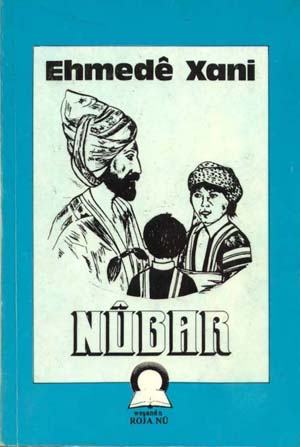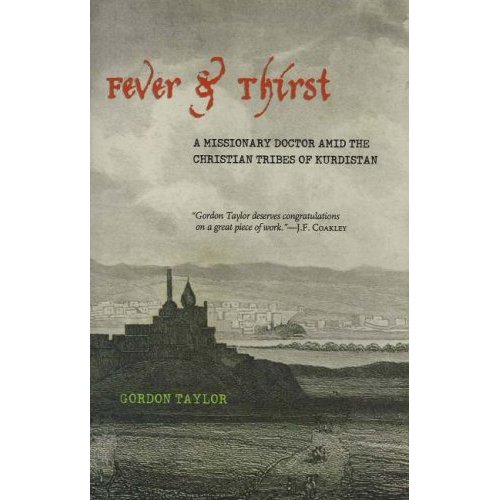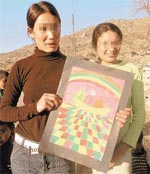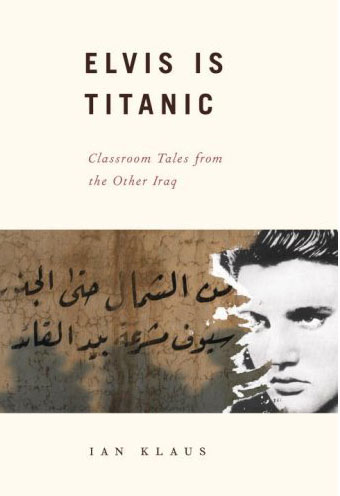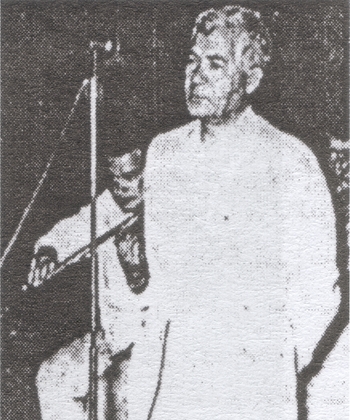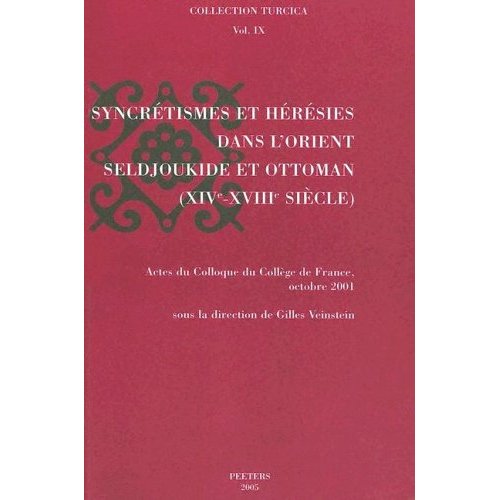
“What elements of the system of these heterodox movements/communities can be treated as tryuly syncretistic ? One needs to take into account, moreover, the fluidity and heterogeneity of Kizilbashism/Alevism both in the spheres of teaching and culting observances, which has incorporated a number of local traditions (mostly related to folk varieties of Islam and Christianity) from the north-east Balkans to eastern Anatolia, the latter being, in the words of Irène Melikoff, “a melting-pot where people and creeds have been subjected to a permanent procedure of catalysis” (an assessment that applies also to the Balkans), which often makes the dating and identification of the provenance of such locally-derived elements difficult and problematic. As in the case of Ahl-he Haqq’s conglomerate-like belief system, the movement towards similar structure of belief among the Alevi/Kizilbash was similarly related to the specific social structure of their tribal groups in certain periods of their history. Furthermore, the later and locally adopted elements in Bektashism and Alevism need to be differentiated from the more archaic components of their beliefs and practices which arguably may represent relics of the pre-Islamic Central Asian Turkic shamanism brought by the Turkoman tribes to Anatolia, or even of Budhism and Nestorian Christianity which also spread among them in their pre-Islamic period in Central Asia. Such awareness of the presence of pre-Islamic Turkic stratum in Bektashism and Alevism needs to be accompanied by an acknowledgement of the simultaneous presence of Iranian traditions in this pre-Islamic stratum, Zoroastrian and otherwise, which the West wards-driven Turkic tribes had variously encountered during their migrations in Central Asia, western Persia, Kurdistan and finally, eastern Anatolia.”
“Recent publications of previously oral only traditions within the Alevi community itself as well as attempts at their scriptualization have reanimated the tension between the dynamic nature of oral traditions and the more static and standardized character of the written ones, a process that finds it parallels in similar developments among other heterodox religious groups in the Near East such as the Ahl-e Haqq. Such multidisciplinary research will have important implications for the further study of the relationship between Alevi and Bektashi traditions in the Balkans and Anatolia, on one hand, and other heterodox and syncretistic minorities in the Near-East like the Ahl-e Haqq in Iran, the Arab-speaking/Nusaîris in Syria, Lebanon and southeast Turkey, the Yezidi in Turkey, Syria and Iraq and the Shabak and Kakai in Iraq, on the other.”
“Prominent examples for such posited Christian influences are the distribution of wine, bread and cheese to the novices during the Bektashi reception ceremony (often thought as a survivance of the Christian Holy Communion) and the confession of sins and absolution among the Bektashis ; practice and communal meals closely resembling respectively the Eucharist or the Christian kiss of peace and the Agape have been also reported among the Kizilbash, while similar arguments have been presented concerning some comparable observances among the Ahl-e Haqq. The Bektashi and Alevi hierarchies have also been seen by some scholars as betraying Christian influences and similarly the institutions of the celibacy for the babas in the Babagân branch of Bektashim following the reform of Balim Sultan (d. 1519) has been attributed by some to the impact of Christian monachism. In the field of belief there have been attempts to identify Christian influences behind the characteristic Alevi/Bektashi trinity of Allah, Mohammed and Ali or in the exaltation of Ali, his elevation as a manifestation of God and his identification with Christ in Alevi and other heterodox or ghulat-influenced traditions. Attempts have been made, moreover, to link the Adoptionist Christology prevalent in some trend in Armenian Christianity with the Isma’ili doctrine of the Imamate and the characteristic ahl-e Haqq doctrines of the successive manifestations of the Divinity.”
“More parallels to some of the central notions of The Sea of Tiberias and the related Eastern European cosmogonic legends can be found in another Alevi/Bektashi cosmogonic account recording that Allah originally created the primordial sea out of which came a precious stone, which he cut into two – from the one came half out the green light Mohammed, and from the other one, the white light of Ali. This Bektashi/Alevi cosmogonic narrative displays obvious parallels to description of the bringing of the stone from the primordial sea in The Sea of Tiberias, its cutting into two and the emergence of different creations from its two halves (although in the apocryphon the account is dualistically coloured) – what is more, this notion of the coming out of primal creations from the confined space of a stone taken from the primordial sea has further analogies in Ahl-e Haqq and Yezidi cosmogonic traditions. Apart from the fact that Alevi/Bektashi angelology shared with Ahl-e Haqq and Yezidi traditions the focus on the crucial role of the four great angels, Jibrâ’il (Gabriel), Mîkâ’îl (Michael) Isrâfîl and Azrâ’îl (who in these angelologies form the core of a supernal heptad of seven holy angels) more telling parallels can be found in the important Yezidi text, Meshef Resh. According to Meshef Resh, in the beginning God originally created the “White Pearl” from his own essence and a bird called Enfer, upon whose back he placed the pearl. God is seen as bringing out the angels from the White Pearl and ‘Azrâ’îl, who is identified as Melek Tawus, the Peacock Angel, eventually is elevated to preside all of them. The White Pearl is, moreover, broken into four pieces and out of it streamed water to generate the sea, the water being thus seen as the primal element of the material creation, as the earth was formed from its solidification. The angel Gabriel, who also assumed the form of a bird, was ordered to take to God two pieces of the White pearl and also to bring to him earth from the four corners of the world (it is worth pointing out at this stage that in Alevi traditions the ornithmorphic connections of Gabriel are enhanced by his symbolic association with the white rooster sacrificed during one of the important Alevi rites).
Therefore, in the Yezidi Meshef Resh, like The Sea of Tiberias and the third Alevi cosmogonic legend discussed above, primal creations are envisaged as emerging from the break-up of a confined space – stone in the Slavonic apocryphon, precious stone in the Alevi account (both divided into two pieces) and the White pearl in the Yezidi text (broken into four pieces). As in The Sea of Tiberias, according to which the first angels are brought out from the stone, in Meshef Resh the first angels are seen as coming out from the White Pearl, whereas in the Alevi/Bektashi account the break-up of the precious stone generates the two lights of Mohammed and Ali. Furthermore, in Meshef Resh, as in some of the early earth-diver cosmogonies, two of the angelic aids of the demiurge, who assist him in the act of creation of the material universe, Melek Tawus and Gabriel, are ornithomorphic. Another general parallel is that like the original ornithomorphic assistant of God in the creation of the world in The Sea of Tiberias, who is granted half of the broken primal stone, in Meshef Resh Gabriel is entrusted for a short period half (two pieces) of the broken White Pearl (although he has simply to bring it to the demiurge) and is assigned earth-gathering duties (although they do not seem to be aprt of the cosmogonic process).
In another version of Yezidi cosmogony both the notion of the primal waters and the ornitomorphic representation of the demiurge and his first angel are greatly emphasized, as God is depicted as dewlling in the shape of a bird on a tree rising above the waters of the primordial ocean and as creating Gabriel also in the form of a bird. There follows the traditionnal discourse in which God asks his angels : “WHo are you and who am I ?” and while Gabriel continues to answer : “You are you and I am I”, he continues to be banished from the tree and force to wonder until he is eventually advised to answer with the correct reply : “Tou are the Creator and I am your Creature”, and is admitted to the tree. In another Yezidi version of the dame scenario it is the other Yezidi ornithomorphic angel, Melek Tawus, who is subjected to this ordeal of Gabriel and has to find the correct response in order to be admitted to the primal tree.
These Yezidi cosmogonic traditions variously combine the notions of the demiurge dwelling upon the primal waters and his discourse with his first (or one of his first angels) which becomes a question-answer trial for the angel intended to make him aware of the uniqueness and oneness of his creator. As in the analogous Alevi accountof Gabriel’s ordeal vis-Ã -vis the triad of God, Mohammed and Ali the function of this Yezidi tradition is to affirm an essentially monotheistic vision of creation. The monotheistic perspective of these Alevi and Yezidi traditions differentiates them from the parallel discourse in The Sea of Tiberias in which the proclamation of the aquatic bird (Satan) that it is a god serves as a prelude to the account of his ensuing revolt against the first demiurge, with its pronounced dualist characteristic.
At the same time, the analogies between the role of the stone of creation in The Sea of Tiberias and the White Pearl in Yezidism can be further extanded to the very similar use of the symbolism of the pearl in Ahl-e Haqq cosmogonic traditions. According to the Ahl-e Haqq text Tadhkira’i A’lâ God created from its own pure light a pearl in the shape of a lamp which became a source for the primal waters and for 60.000 years the whole world was water and the “Lord of the World” moved on it. As in the Yezidi Meshef Resh in Tadhkira A’lâ the pearl is seen as the source of the primal waters, which as in the Yezidi text the creator solidifies to create the earth – only in the Ahl-e Haqq text, as in one of the versions of The Sea of Tiberias, the earth is generated from the sea foam formed from the solidification of the water. In another Ahl-e Haqq-related cosmogonic tradition the “King of the World” is depicted as existing before the creation of the world as a “pearl in the middle of a shell” and initiates the creation process by causing the primal waters to appear and producing heaven from their vapours and earth from their foams. Other Ahl-e Haqq texts such as Shah-nama-ye Haqiqat and Ilam-e Haqiqat, also develop the notion of the divine essence originally dwelling in a pearl, itself in the waters of the all-encompassing primal sea. Ahl-e Haqq cosmogonic traditions, moreover, could also conflate the traditions of the ornithomorphic depiction of the creator and that of his pre-existence in a pearl, as in the account of Shaykh Amir, which depicts God in the form of a bird and dwelling within a pearl in the primal ocean prior to the initiation of the creation process.
Some of these “pearl and water” Ahl-e Haqq cosmogonies also develop and offer versions of the tradition of Gabriel’s question and answer ordeal, which include both the conventionnal form found in Alevi and Yezidi traditions (attested, for example, in Tadhikra A’lâ) and more elaborate variants. In one variant of this tradition it is the angel Benyamin who has to undergo Gabriel’s test, as in Ahl-e Haqq sacred history the four great angels incarnate in successive cycles to accompany the successive manifestation of the Deity and Benyamin is effectively an incarnation of Gabriel, accompanying the fourth divine avatar, Sultan Sahak. In a scene slightly reminiscent of the opening section of The Sea of Tiberias, when God emerged for a first time from his pearl into the primal sea, he found the angel Benyamin swimming in the waters and began to question him about his identity.
Admittedly these Alevi, Ahl-e Haqq and Yezidi cosmogonic beliefs may have been subjected to re-interpretations and modifications during the Ottoman period (it is woth noting that a number of them were recorded in the ninetheenth and twentieth centuries), but they evidently comprise a core of very archaic features which can trace to old water cosmogonies and in the case of Ahl-e Haqq and Yezidi teachings to ancient (in some cases, pre-Zoroastrian) Iranian traditions. Certain elements such as the ornithomorphism of the Creator and/or his first angel (the latter notion is shared in the Sea of Tiberias which emphasized the ornothomorphism of God’s first partner in the demiurgic word) variously developped in some of these cosmogonies, may derive from earlier, pre-islamic Turkic and Iranian traditions or indeed from earth-diver cosmogonies involving bird demiurge figures – these are areas that need further investigation. The notion of the pearl/stone in the primal sea that serves as the source for spiritual/material creations similarly derives in all likelihood, whether directly or indirectly, from the archaic earth-diver cosmogonies, but unlike the Sea of Tiberias and the realted Eastern European dualist cosmogonic cycle the theme of the earth-diving itself has been abandoned.
One needs to emphasized that some of the pre and non-islamic Turkic earth-diver cosmogonies, which are the most likely sources for the ornithomorphism of the demiurgic figures and the theme of the “stone” or “seed of the earth” in the primal waters variously attested in the above Alevi, Ahl-e Haqq and Yezidi traditions, display marked dualist tendencies. ”
“The evident and variously pronounced dualist tendencies and elements in these Northern and Central Asian non-Islamic cosmogonies were in all likehood the outcome of external (most likely Iranian) influences, although in some cases a largely internal development should be also considered. However, while they may have served as sources for some notions in the aforementionned Ahl-e haqq, Yezidi and Alevi cosmogonies, the latter certainly did not absorb or develop these dualist features but rather neutralized the dualist potential of the cosmogonic scenarios by re-interpreting them in a more or less monotheistic framework.”
“While the fact that these Alevi, Ahl-e Haqq and Yezidi cosmogonic traditions do not develop the dualist elements present int he inherited archaic scenarios has important theological implications, it should be noted that in the case of Alevism, research on the Alevi communities in the eastern Balkans, with their diverse roots, is its infant stages and in the near future new publications of relevant material may alter the picture. Furthermore, the very plurality of the three creator figures in these Alevi cosmogonies can on occasion create tensions in any otherwise monotheistic system, particularly when the great angels are also entrusted with important functions in the cosmogonic process. These greatly enhanced functions of the angels are also characteristic of Yezidi and Ahl-e Haqq traditions and important precedents can be found in Isma’ili cosmological and cosmogonic traditions in which angelic or secundary spiritual agencies could be described as performing some of the crucial demiurgic work in tjhe process of the creation of the spiritual and material world. If one considers some earlier and parallel development of Jewish angelology within Jewish apocalypticism in the intertestamental period, for example, the similar process of attributing to the angels an imoprtant role in the cosmogonic work led to the emergence of dualist tendancies, as some of these angels came to acquire on certain occasions ambiguous or negative characteristics. Future research will show if any comparable development ever took place in a rudimentary or more evolved form among any of the Alevi group in the Balkans and Anatolia ; certainly a secondary development towards more unorthodox tenets or dualism is known to have occurred among islamic heterodox groups in the Near East, a development that could be conditionned by further growth of the heterodox elements in their beliefs or as a feature of an evolving ethnic differentiation – a suitable example may be found in the Yadegari and Khamushi Ahl-e Haqq groups the Guran area in Iran.”
Yuri Stoyanov, “On some parallels between Anatolian and Balkan heterodox Islamic and Christian traditions and the problem of their coexistence and interaction in the Ottoman period.”

